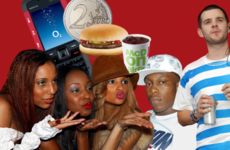MANY COMPARISONS HAVE been made between this referendum and the 2015 Marriage Equality Referendum. Both are similar in that we are voting between letting religious institutions decide what is morally acceptable or letting people decide themselves what morals they wish to live by.
However, there’s a fundamental difference between the two referendums. In the last referendum, it was socially acceptable to talk aloud about your wish to get married.
The day you get married is a hugely special day. Every married couple has a photograph in their house of the day they got married. During the referendum, people who were openly LGBTQ could talk about their desire to have a day out, a day to celebrate with their family and friends.
They wanted to have a photograph of their wedding hanging in their house.
Which is something we can all relate to. I mean, if you don’t have an instagram of something, did it even happen?
But no one, not one single person, is going to want to have a photograph hanging in their house of the day they needed an abortion.
No one is going to take a picture of themselves in a hospital room as the doctor tells them that their baby’s skull and brain hasn’t developed.
No one is going to take a picture of the day their partner begins to violently abuse them after they become pregnant (30% of women who experience domestic violence are physically assaulted for the first time during pregnancy).
No one is going to take a picture of themselves holding a pregnancy test, alone in their college dorm bathroom as their world crashes around them.
Visuals are so important.
We remember an image, or how an image made us feel. A conversation is forgotten quickly or becomes blurred. But an image is an anchor to the past. The phrase ‘a picture paints a thousand words’ is overused, but its meaning is true.
The lack of visuals for the anti-Amendment side back in 1983 was problematic.
The pro-Amendment side had the monopoly of visuals. Badges of tiny, little silver feet were used to symbolise the pregnancy that was being terminated through induced abortion.
The tiny badge was so small that it was hard to see them.. Their size was an apt visual for how the topic of abortions was ignored. It was happening, but abortion and the reasons women needed them were being looked over.
The 8th Amendment did not stop any Irish women from having abortions. It merely brushed the topic underneath the carpet. It made what was the reality for Irish women invisible.
And that is why fashion during this referendum was so important – it’s made the invisible visible.
Repeal jumpers, set up by activist Anna Cosgrave, have been a visual anchor of support for many who had no images of the day their country turned their backs on them.
The jumpers were a rally cry to those who luckily had never been faced with the Sophie’s choice decision – my life as a woman or the continued creation of a new life – but who felt pity and compassion for those abandoned by their country.
Meanwhile, the 8th Amendment, which has been in place for 35 years was used as a symbol for the No side.
Their message that the 8th amendment ‘loved both’ seemed inauthentic. The 8th Amendment was voted in at a time when Magdalene Laundries were still open, and mothers were forced to place their babies for adoption. Or felt pressured to because society looked down on single mothers.
Love Both didn’t acknowledge that over 50% of women who travel from Ireland to access abortion care were already mothers. They already knew what it was to have developed life inside of you and then give birth to life. They already were loving both.
[image src="http://cdn.thejournal.ie/media/2018/05/fabby-296x277.png" width="296" height="277" credit-source="fabianavsmm%2C%20Facebook%20" class="alignnone" /end]
Many thought the jumpers were too militant, too in your face, too aggressive a symbol with their striking black and white imagery.
Maybe. But being a woman means that we have to fight for our rights. They have never been giving freely to women.
We have to shout loudly to get the rights that should be fundamental.
But the topic of abortion, the right to bodily autonomy, was one we couldn’t speak aloud. The In Her Shoes page is full of women who have never breathed a word of their abortions to friends or family but who wanted to have a voice in this referendum.
These women needed to see that the striking black and white image of support. Imagine being a woman in your 60s, who had never told a soul except maybe one friend, that you had gone to England for an abortion. Imagine seeing the jumpers on the street. Imagine the lump in your throat as your realise that others do not look at you as sinner, as a murderer who should serve 14 years.
That they trust that you made the right decision for you.
As you vote on Friday, think of the thousands of women who have died, never telling a soul that they had a baby out of wedlock. Never meeting the child taken away from them and placed for adoption. Think of the woman who died never knowing that their country trusted them to know what is right to do with their body.
Wear your jumper inside out in the polling booth and think of them.













COMMENTS